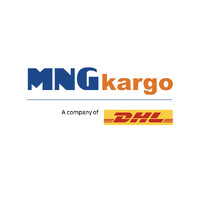
MNG Kargo - a company of DHL Company Cyber Security Posture
mngkargo.com.tr2003 yılında kurulan MNG Kargo, 850’den fazla şubesi, 9 tanesi Teknolojik Aktarma Merkezi olmak üzere toplam 29 aktarma merkezi, 21 minihub, 14 bölge müdürlüğü, 10.000’in üzerinde çalışanı ve 4.100’den fazla kara taşıma aracı ile hizmet vermektedir. MNG Kargo, Türkiye’nin bir ucundan diğer ucuna ve dünyada 220 farklı ülkede, günde 600 binden fazla adrese dünya standartlarında hizmet ulaştıran Türkiye’nin lider kargo şirketlerindendir. Sektörde ilk Teknolojik Aktarma Merkezlerine sahip kargo şirketi olan MNG Kargo, bu teknoloji sayesinde saatte 65 bin kargoyu yüksek hızda ayrıştırıp, el değmeden hatasız olarak hat araçlarına yükleyerek, hasarsız teslimat sağlamaktadır. Türkiye’de kargo taşımacılığı sektörünün gelişiminde başrol oynayan, dünya standartlarındaki hizmet anlayışı ile ülkemiz taşımacılık sektörüne çağdaş dinamikler kazandırmış olan MNG Kargo yatırımları ile güçlenmeye ve taşımacılık sektörüne değer katmaya devam etmektedir.
MK-CD Company Details
mngkargo
2747 employees
40860
none
Transportation, Logistics, Supply Chain and Storage
mngkargo.com.tr
Scan still pending
MNG_2572008
In-progress
Between 200 and 800
This score is AI-generated and less favored by cyber insurers, who prefer the TPRM score.
 MK-CD Global Score
MK-CD Global Score.png)

MNG Kargo - a company of DHL Company Scoring based on AI Models
| Model Name | Date | Description | Current Score Difference | Score |
|---|---|---|---|---|
| AVERAGE-Industry | 03-12-2025 | This score represents the average cybersecurity rating of companies already scanned within the same industry. It provides a benchmark to compare an individual company's security posture against its industry peers. | N/A | Between 200 and 800 |
MNG Kargo - a company of DHL Company Cyber Security News & History
| Entity | Type | Severity | Impact | Seen | Url ID | Details | View |
|---|---|---|---|---|---|---|---|
| MNG Kargo | Data Leak | 60 | 3 | 08/2021 | MNG843111122 | Link | |
Rankiteo Explanation : Attack with significant impact with internal employee data leaksDescription: MNG Cargo, which has a wide transportation network targeted by the cyber attack in August 2021. Due to the theft of several of its business clients' user names and passwords, those clients' computers were subjected to cyber-attacks. The corporation disclosed that it had seized the names, surnames, addresses, and phone numbers of the shipment recipients and had notified the Personal Data Protection Authority of this. They investigated the incident and took preventive steps. | |||||||
MNG Kargo - a company of DHL Company Subsidiaries

2003 yılında kurulan MNG Kargo, 850’den fazla şubesi, 9 tanesi Teknolojik Aktarma Merkezi olmak üzere toplam 29 aktarma merkezi, 21 minihub, 14 bölge müdürlüğü, 10.000’in üzerinde çalışanı ve 4.100’den fazla kara taşıma aracı ile hizmet vermektedir. MNG Kargo, Türkiye’nin bir ucundan diğer ucuna ve dünyada 220 farklı ülkede, günde 600 binden fazla adrese dünya standartlarında hizmet ulaştıran Türkiye’nin lider kargo şirketlerindendir. Sektörde ilk Teknolojik Aktarma Merkezlerine sahip kargo şirketi olan MNG Kargo, bu teknoloji sayesinde saatte 65 bin kargoyu yüksek hızda ayrıştırıp, el değmeden hatasız olarak hat araçlarına yükleyerek, hasarsız teslimat sağlamaktadır. Türkiye’de kargo taşımacılığı sektörünün gelişiminde başrol oynayan, dünya standartlarındaki hizmet anlayışı ile ülkemiz taşımacılık sektörüne çağdaş dinamikler kazandırmış olan MNG Kargo yatırımları ile güçlenmeye ve taşımacılık sektörüne değer katmaya devam etmektedir.
Access Data Using Our API

Get company history
.png)
MK-CD Cyber Security News
Oct 06, 2023: Acquisition approved: Turkish parcel delivery provider MNG Kargo is now part of DHL Group
DHL Group completes the acquisition of Turkish parcel delivery company MNG Kargo Yurtiçi ve Yurtdışı Taşımacılık A.Ş. (MNG Kargo) and its subsidiaries.
Jul 25, 2023: DHL Group to acquire Turkish parcel delivery provider MNG Kargo
MNG Kargo is one of the leading parcel delivery companies in Turkey, where the parcel and e-commerce market is growing rapidly.
MNG Kargo Rebrands as DHL eCommerce in Turkey
As of May 22, 2025, MNG Kargo officially changes its name to DHL eCommerce, continuing its operations under the global DHL Group umbrella.
DHL buys Turkish firm to tap into e-commerce sector
Delivery giant DHL has bought Turkey's MNG Kargo for an undisclosed sum to tap into the country's rapidly growing ecommerce sector.

MK-CD Similar Companies

Österreichische Post AG
Die Österreichische Post AG ist ein international tätiger Post-, Logistik- und Dienstleistungskonzern mit herausragender Bedeutung für Österreich. Konzernweit erwirtschaftete die Post im Jahr 2024 mit ihren rund 28.000 Mitarbeiter*innen einen Jahresumsatz von über 3,1 Mrd EUR. In Österreich umfasst
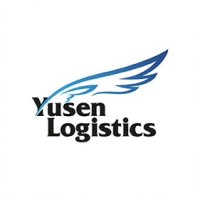
Yusen Logistics
Yusen Logistics is the insight-driven, customer-centric logistics partner to global business. We deliver this through an extended range of services from International Freight Forwarding and Contract Logistics to Supply Chain Solutions and Industry insights covering the full supply chain. We invest
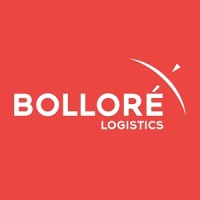
Bolloré Logistics
Bolloré Logistics is a company of the CMA CGM Group and a Top 5 player in global logistics. Bolloré Logistics has developed a powerful network spread across 146 countries, including 83 partners, with 14,000 professionals responding to your specific requirements. Moderating Rules: The purpose of t
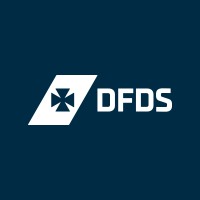
DFDS LOGISTICS NL
DFDS is ontstaan in 1866 toen 4 Deense stoomschipbedrijven samengevoegd werden tot Det Forenede Dampskibs-Selskab. Door de oprichting van DFDS werd het eenvoudiger om op internationaal niveau handel met elkaar te bedrijven. Dit zorgde ervoor dat ondernemers in alle soorten en maten (economisch) kond
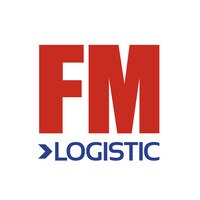
FM Logistic
With more than 28 000 collaborators worldwide, FM LOGISTIC ensures the optimization of the global supply chain: warehousing (computerized inventory management, order processing etc), co-packing, food co-manufacturing and industrial manufacturing, transportation / distribution. From production to

Grupo Almo
Somos un grupo líder en la industria de seguridad, servicios de transporte de valores, paquetería y courier. Operamos en Guatemala, El Salvador, Honduras, Nicaragua, Costa Rica y Panamá. Hemos sido el líder en la mayoría de los segmentos del negocio por más de 40 años. Actualmente empleamos m

Frequently Asked Questions (FAQ) on Cybersecurity Incidents
MK-CD CyberSecurity History Information
Total Incidents: According to Rankiteo, MK-CD has faced 1 incidents in the past.
Incident Types: The types of cybersecurity incidents that have occurred include ['Data Leak'].
Total Financial Loss: The total financial loss from these incidents is estimated to be {total_financial_loss}.
Cybersecurity Posture: The company's overall cybersecurity posture is described as 2003 yılında kurulan MNG Kargo, 850’den fazla şubesi, 9 tanesi Teknolojik Aktarma Merkezi olmak üzere toplam 29 aktarma merkezi, 21 minihub, 14 bölge müdürlüğü, 10.000’in üzerinde çalışanı ve 4.100’den fazla kara taşıma aracı ile hizmet vermektedir. MNG Kargo, Türkiye’nin bir ucundan diğer ucuna ve dünyada 220 farklı ülkede, günde 600 binden fazla adrese dünya standartlarında hizmet ulaştıran Türkiye’nin lider kargo şirketlerindendir. Sektörde ilk Teknolojik Aktarma Merkezlerine sahip kargo şirketi olan MNG Kargo, bu teknoloji sayesinde saatte 65 bin kargoyu yüksek hızda ayrıştırıp, el değmeden hatasız olarak hat araçlarına yükleyerek, hasarsız teslimat sağlamaktadır. Türkiye’de kargo taşımacılığı sektörünün gelişiminde başrol oynayan, dünya standartlarındaki hizmet anlayışı ile ülkemiz taşımacılık sektörüne çağdaş dinamikler kazandırmış olan MNG Kargo yatırımları ile güçlenmeye ve taşımacılık sektörüne değer katmaya devam etmektedir..
Detection and Response: The company detects and responds to cybersecurity incidents through {description_of_detection_and_response_process}.
Incident Details
Incident 1: Ransomware Attack
Title: {Incident_Title}
Description: {Brief_description_of_the_incident}
Date Detected: {Detection_Date}
Date Publicly Disclosed: {Disclosure_Date}
Date Resolved: {Resolution_Date}
Type: {Type_of_Attack}
Attack Vector: {Attack_Vector}
Vulnerability Exploited: {Vulnerability}
Threat Actor: {Threat_Actor}
Motivation: {Motivation}
Incident 2: Data Breach
Title: {Incident_Title}
Description: {Brief_description_of_the_incident}
Date Detected: {Detection_Date}
Date Publicly Disclosed: {Disclosure_Date}
Date Resolved: {Resolution_Date}
Type: {Type_of_Attack}
Attack Vector: {Attack_Vector}
Vulnerability Exploited: {Vulnerability}
Threat Actor: {Threat_Actor}
Motivation: {Motivation}
Common Attack Types: As of now, the company has not encountered any reported incidents involving common cyberattacks.
Identification of Attack Vectors: The company identifies the attack vectors used in incidents through {description_of_identification_process}.
Impact of the Incidents
Incident 1: Ransomware Attack
Financial Loss: {Financial_Loss}
Data Compromised: {Data_Compromised}
Systems Affected: {Systems_Affected}
Downtime: {Downtime}
Operational Impact: {Operational_Impact}
Conversion Rate Impact: {Conversion_Rate_Impact}
Revenue Loss: {Revenue_Loss}
Customer Complaints: {Customer_Complaints}
Brand Reputation Impact: {Brand_Reputation_Impact}
Legal Liabilities: {Legal_Liabilities}
Identity Theft Risk: {Identity_Theft_Risk}
Payment Information Risk: {Payment_Information_Risk}
Incident 2: Data Breach
Financial Loss: {Financial_Loss}
Data Compromised: {Data_Compromised}
Systems Affected: {Systems_Affected}
Downtime: {Downtime}
Operational Impact: {Operational_Impact}
Conversion Rate Impact: {Conversion_Rate_Impact}
Revenue Loss: {Revenue_Loss}
Customer Complaints: {Customer_Complaints}
Brand Reputation Impact: {Brand_Reputation_Impact}
Legal Liabilities: {Legal_Liabilities}
Identity Theft Risk: {Identity_Theft_Risk}
Payment Information Risk: {Payment_Information_Risk}
Average Financial Loss: The average financial loss per incident is {average_financial_loss}.
Commonly Compromised Data Types: The types of data most commonly compromised in incidents are {list_of_commonly_compromised_data_types}.
Incident 1: Ransomware Attack
Entity Name: {Entity_Name}
Entity Type: {Entity_Type}
Industry: {Industry}
Location: {Location}
Size: {Size}
Customers Affected: {Customers_Affected}
Incident 2: Data Breach
Entity Name: {Entity_Name}
Entity Type: {Entity_Type}
Industry: {Industry}
Location: {Location}
Size: {Size}
Customers Affected: {Customers_Affected}
Response to the Incidents
Incident 1: Ransomware Attack
Incident Response Plan Activated: {Yes/No}
Third Party Assistance: {Yes/No}
Law Enforcement Notified: {Yes/No}
Containment Measures: {Containment_Measures}
Remediation Measures: {Remediation_Measures}
Recovery Measures: {Recovery_Measures}
Communication Strategy: {Communication_Strategy}
Adaptive Behavioral WAF: {Adaptive_Behavioral_WAF}
On-Demand Scrubbing Services: {On_Demand_Scrubbing_Services}
Network Segmentation: {Network_Segmentation}
Enhanced Monitoring: {Enhanced_Monitoring}
Incident 2: Data Breach
Incident Response Plan Activated: {Yes/No}
Third Party Assistance: {Yes/No}
Law Enforcement Notified: {Yes/No}
Containment Measures: {Containment_Measures}
Remediation Measures: {Remediation_Measures}
Recovery Measures: {Recovery_Measures}
Communication Strategy: {Communication_Strategy}
Adaptive Behavioral WAF: {Adaptive_Behavioral_WAF}
On-Demand Scrubbing Services: {On_Demand_Scrubbing_Services}
Network Segmentation: {Network_Segmentation}
Enhanced Monitoring: {Enhanced_Monitoring}
Incident Response Plan: The company's incident response plan is described as {description_of_incident_response_plan}.
Third-Party Assistance: The company involves third-party assistance in incident response through {description_of_third_party_involvement}.
Data Breach Information
Incident 2: Data Breach
Type of Data Compromised: {Type_of_Data}
Number of Records Exposed: {Number_of_Records}
Sensitivity of Data: {Sensitivity_of_Data}
Data Exfiltration: {Yes/No}
Data Encryption: {Yes/No}
File Types Exposed: {File_Types}
Personally Identifiable Information: {Yes/No}
Prevention of Data Exfiltration: The company takes the following measures to prevent data exfiltration: {description_of_prevention_measures}.
Handling of PII Incidents: The company handles incidents involving personally identifiable information (PII) through {description_of_handling_process}.
Ransomware Information
Incident 1: Ransomware Attack
Ransom Demanded: {Ransom_Amount}
Ransom Paid: {Ransom_Paid}
Ransomware Strain: {Ransomware_Strain}
Data Encryption: {Yes/No}
Data Exfiltration: {Yes/No}
Ransom Payment Policy: The company's policy on paying ransoms in ransomware incidents is described as {description_of_ransom_payment_policy}.
Data Recovery from Ransomware: The company recovers data encrypted by ransomware through {description_of_data_recovery_process}.
Regulatory Compliance
Incident 1: Ransomware Attack
Regulations Violated: {Regulations_Violated}
Fines Imposed: {Fines_Imposed}
Legal Actions: {Legal_Actions}
Regulatory Notifications: {Regulatory_Notifications}
Incident 2: Data Breach
Regulations Violated: {Regulations_Violated}
Fines Imposed: {Fines_Imposed}
Legal Actions: {Legal_Actions}
Regulatory Notifications: {Regulatory_Notifications}
Regulatory Frameworks: The company complies with the following regulatory frameworks regarding cybersecurity: {list_of_regulatory_frameworks}.
Ensuring Regulatory Compliance: The company ensures compliance with regulatory requirements through {description_of_compliance_measures}.
Lessons Learned and Recommendations
Incident 1: Ransomware Attack
Lessons Learned: {Lessons_Learned}
Incident 2: Data Breach
Lessons Learned: {Lessons_Learned}
Incident 1: Ransomware Attack
Recommendations: {Recommendations}
Incident 2: Data Breach
Recommendations: {Recommendations}
Key Lessons Learned: The key lessons learned from past incidents are {list_of_key_lessons_learned}.
Implemented Recommendations: The company has implemented the following recommendations to improve cybersecurity: {list_of_implemented_recommendations}.
References
Additional Resources: Stakeholders can find additional resources on cybersecurity best practices at {list_of_additional_resources}.
Investigation Status
Incident 1: Ransomware Attack
Investigation Status: {Investigation_Status}
Incident 2: Data Breach
Investigation Status: {Investigation_Status}
Communication of Investigation Status: The company communicates the status of incident investigations to stakeholders through {description_of_communication_process}.
Stakeholder and Customer Advisories
Incident 1: Ransomware Attack
Stakeholder Advisories: {Stakeholder_Advisories}
Customer Advisories: {Customer_Advisories}
Incident 2: Data Breach
Stakeholder Advisories: {Stakeholder_Advisories}
Customer Advisories: {Customer_Advisories}
Advisories Provided: The company provides the following advisories to stakeholders and customers following an incident: {description_of_advisories_provided}.
Initial Access Broker
Incident 1: Ransomware Attack
Entry Point: {Entry_Point}
Reconnaissance Period: {Reconnaissance_Period}
Backdoors Established: {Backdoors_Established}
High Value Targets: {High_Value_Targets}
Data Sold on Dark Web: {Yes/No}
Incident 2: Data Breach
Entry Point: {Entry_Point}
Reconnaissance Period: {Reconnaissance_Period}
Backdoors Established: {Backdoors_Established}
High Value Targets: {High_Value_Targets}
Data Sold on Dark Web: {Yes/No}
Monitoring and Mitigation of Initial Access Brokers: The company monitors and mitigates the activities of initial access brokers through {description_of_monitoring_and_mitigation_measures}.
Post-Incident Analysis
Incident 1: Ransomware Attack
Root Causes: {Root_Causes}
Corrective Actions: {Corrective_Actions}
Incident 2: Data Breach
Root Causes: {Root_Causes}
Corrective Actions: {Corrective_Actions}
Post-Incident Analysis Process: The company's process for conducting post-incident analysis is described as {description_of_post_incident_analysis_process}.
Corrective Actions Taken: The company has taken the following corrective actions based on post-incident analysis: {list_of_corrective_actions_taken}.
Additional Questions
General Information
Ransom Payment History: The company has {paid/not_paid} ransoms in the past.
Last Ransom Demanded: The amount of the last ransom demanded was {last_ransom_amount}.
Last Attacking Group: The attacking group in the last incident was {last_attacking_group}.
Incident Details
Most Recent Incident Detected: The most recent incident detected was on {most_recent_incident_detected_date}.
Most Recent Incident Publicly Disclosed: The most recent incident publicly disclosed was on {most_recent_incident_publicly_disclosed_date}.
Most Recent Incident Resolved: The most recent incident resolved was on {most_recent_incident_resolved_date}.
Impact of the Incidents
Highest Financial Loss: The highest financial loss from an incident was {highest_financial_loss}.
Most Significant Data Compromised: The most significant data compromised in an incident was {most_significant_data_compromised}.
Most Significant System Affected: The most significant system affected in an incident was {most_significant_system_affected}.
Response to the Incidents
Third-Party Assistance in Most Recent Incident: The third-party assistance involved in the most recent incident was {third_party_assistance_in_most_recent_incident}.
Containment Measures in Most Recent Incident: The containment measures taken in the most recent incident were {containment_measures_in_most_recent_incident}.
Data Breach Information
Most Sensitive Data Compromised: The most sensitive data compromised in a breach was {most_sensitive_data_compromised}.
Number of Records Exposed: The number of records exposed in the most significant breach was {number_of_records_exposed}.
Ransomware Information
Highest Ransom Demanded: The highest ransom demanded in a ransomware incident was {highest_ransom_demanded}.
Highest Ransom Paid: The highest ransom paid in a ransomware incident was {highest_ransom_paid}.
Regulatory Compliance
Highest Fine Imposed: The highest fine imposed for a regulatory violation was {highest_fine_imposed}.
Most Significant Legal Action: The most significant legal action taken for a regulatory violation was {most_significant_legal_action}.
Lessons Learned and Recommendations
Most Significant Lesson Learned: The most significant lesson learned from past incidents was {most_significant_lesson_learned}.
Most Significant Recommendation Implemented: The most significant recommendation implemented to improve cybersecurity was {most_significant_recommendation_implemented}.
References
Most Recent Source: The most recent source of information about an incident is {most_recent_source}.
Most Recent URL for Additional Resources: The most recent URL for additional resources on cybersecurity best practices is {most_recent_url}.
Investigation Status
Current Status of Most Recent Investigation: The current status of the most recent investigation is {current_status_of_most_recent_investigation}.
Stakeholder and Customer Advisories
Most Recent Stakeholder Advisory: The most recent stakeholder advisory issued was {most_recent_stakeholder_advisory}.
Most Recent Customer Advisory: The most recent customer advisory issued was {most_recent_customer_advisory}.
Initial Access Broker
Most Recent Entry Point: The most recent entry point used by an initial access broker was {most_recent_entry_point}.
Most Recent Reconnaissance Period: The most recent reconnaissance period for an incident was {most_recent_reconnaissance_period}.
Post-Incident Analysis
Most Significant Root Cause: The most significant root cause identified in post-incident analysis was {most_significant_root_cause}.
Most Significant Corrective Action: The most significant corrective action taken based on post-incident analysis was {most_significant_corrective_action}.
What Do We Measure?
















Every week, Rankiteo analyzes billions of signals to give organizations a sharper, faster view of emerging risks. With deeper, more actionable intelligence at their fingertips, security teams can outpace threat actors, respond instantly to Zero-Day attacks, and dramatically shrink their risk exposure window.
These are some of the factors we use to calculate the overall score:
Identify exposed access points, detect misconfigured SSL certificates, and uncover vulnerabilities across the network infrastructure.
Gain visibility into the software components used within an organization to detect vulnerabilities, manage risk, and ensure supply chain security.
Monitor and manage all IT assets and their configurations to ensure accurate, real-time visibility across the company's technology environment.
Leverage real-time insights on active threats, malware campaigns, and emerging vulnerabilities to proactively defend against evolving cyberattacks.




